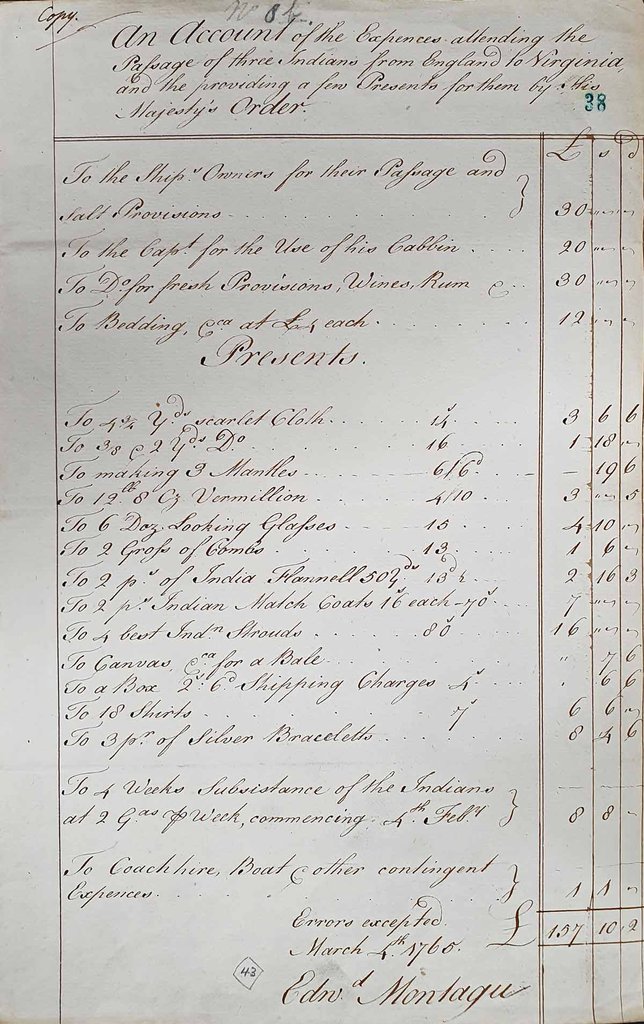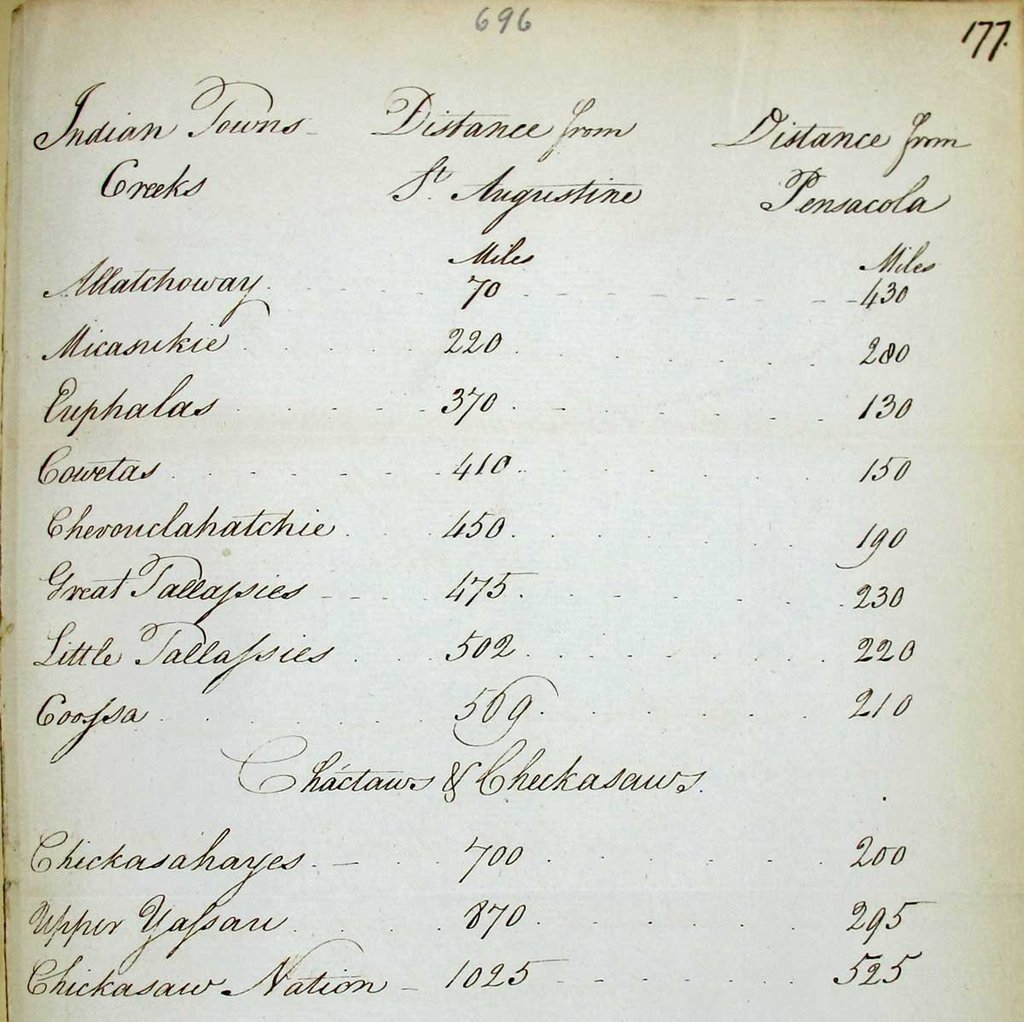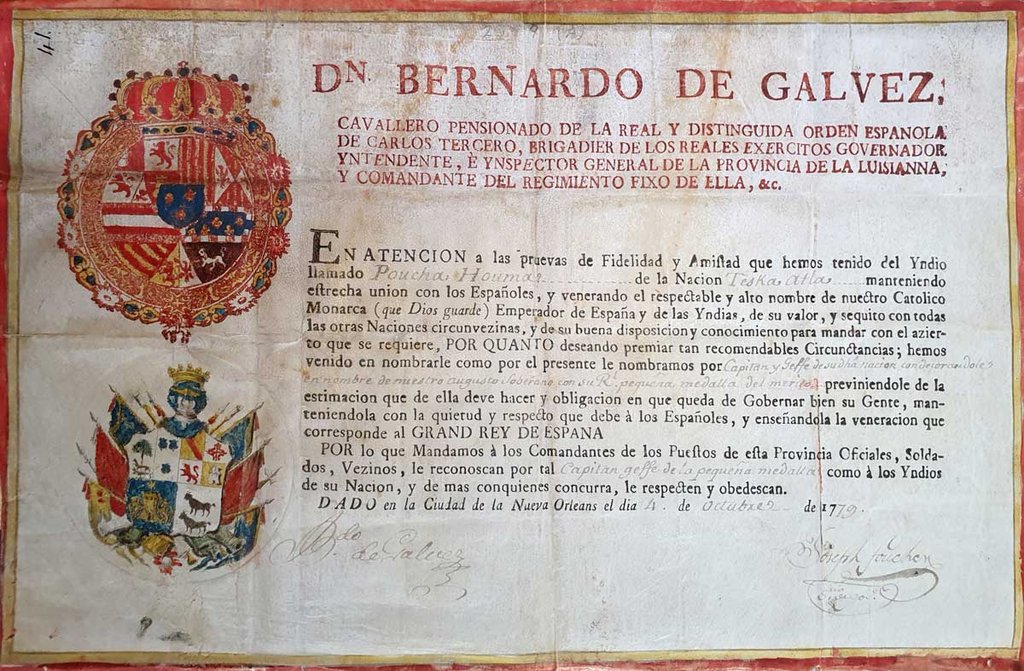Native Americans and the British in the 18th century
While Britain's American Colonies grew, Native American tribes became increasingly reliant on European powers for trade goods, especially metal objects and firearms. Our records shed light on relations with the Creek nation and the Cherokee, for example, before and during the Revolutionary War.
List of trade goods supplied to the Creek Indians of Georgia
Date: 6 July 1748
Catalogue reference: View the record SP 36/107/2/65 in the catalogue
This is a memorial (statement) by Abraham Bosomworth asking for his brother’s wife, Mary Musgrove, to be reimbursed for providing ‘presents’ to the Muskogee Creek Indians on behalf of the British Crown.
He asks for Mary to be paid £349 12s 1d for the sundries she provided ‘from her own store’ in 1747 to Este Paechi headman of the Cussitas, Astulli young king of the Cowetas, and to Malatchi the Emperor. He also charges £20 ‘for her trouble and expenses as Interpreter’.
This record is a rare example of an 18th-century colonial document that relates to an indigenous American woman. Mary, married to Thomas Bosomworth, was half Yamasee, and acted as an interpreter and trader with the Creeks. The document also reveals the typical Indian trade goods of the colonial period.

Expenses for returning three Cherokee Chiefs after their visit to England
Date: 4 March 1765
Catalogue reference: View the record SP 37/4 in the catalogue
This is ‘An account of the expences attending the passage of three Indians from England to Virginia, and the providing a few presents for them by His Majesty's Order'. It was enclosed within a letter from the Board of Trade to the Secretary of State, the Earl of Halifax.
It refers to the South Carolina Cherokee Indian chiefs Osteneco, Cunneshote and Woyi, who had been presented to King George III in London. Their arrival at the Hanoverian Court had proven very popular with ‘fashionable’ Georgian society.
The document records the cost of the chieftains’ travel back to the American Colonies in July 1764, under the care of Ensign Henry Timberlake of the Virginia militia. It is important evidence that Native Americans voyaged to Europe, and highlights an important diplomatic tribal embassy to England.

Distances from Indian towns to the British-held Floridas
Date: 25 September 1777
Catalogue reference: View the record PRO 30/55/6/103 in the catalogue
This is an intelligence report showing the distances of the pro-British Creek Indian towns and the largely Spanish-and-American-allied Choctaw and Chickasaw nations from St Augustine, capital of the British colony of East Florida, and Pensacola, capital of the British colony of West Florida.
It highlights the great distances that the American Revolutionary War would be fought over on the Southern backcountry frontier.
It was sent by the Creek Indian leader Alexander McGillivray to John Stuart, the British Superintendent of Indian Affairs.

Spanish warrant to the chief of the Houma tribe
Date: 3 October 1779
Catalogue reference: View the record PRO 30/55/19/68 in the catalogue
This colourful warrant was issued by the governor of Spanish Louisiana, Don Bernardo De Galvez, to appoint Poucha Houmas of the Teskaatla Houma tribe as ‘captain and chief of the southern nation on behalf of the Emperor of Spain and the Indies’.
Issued in New Orleans in the name of the Spanish King Carlos III, it awards Poucha Houmas a ‘small royal medal of merit’ and states that ‘the Indians and the people of the province recognise and respect him’. It captures the European colonial administrations’ reliance on native peoples as allies and auxiliaries in time of war.
The document was forwarded by General William Haldimand, the governor of Quebec, to General Henry Clinton, Commander-in-Chief of the British army in North America.
